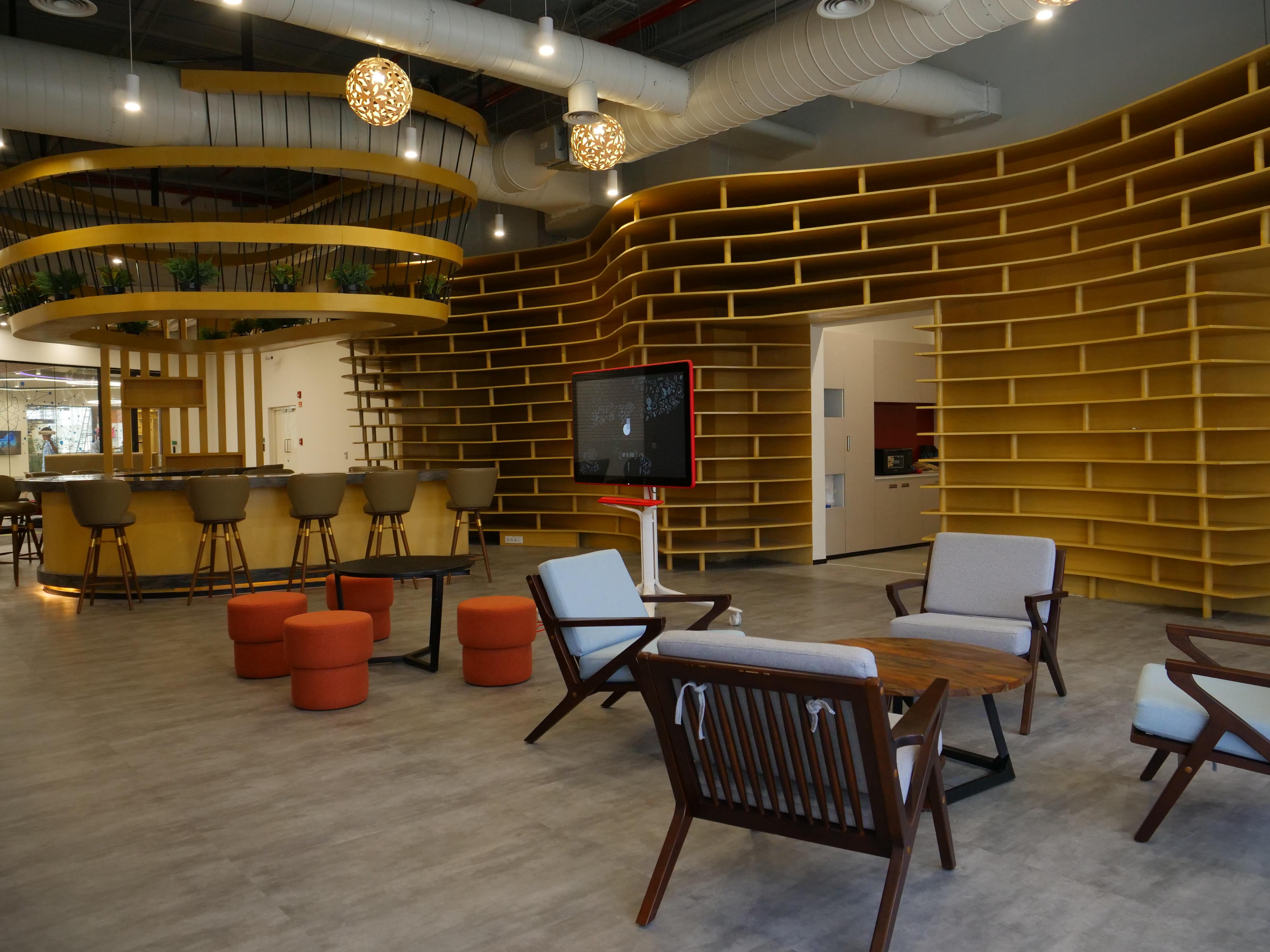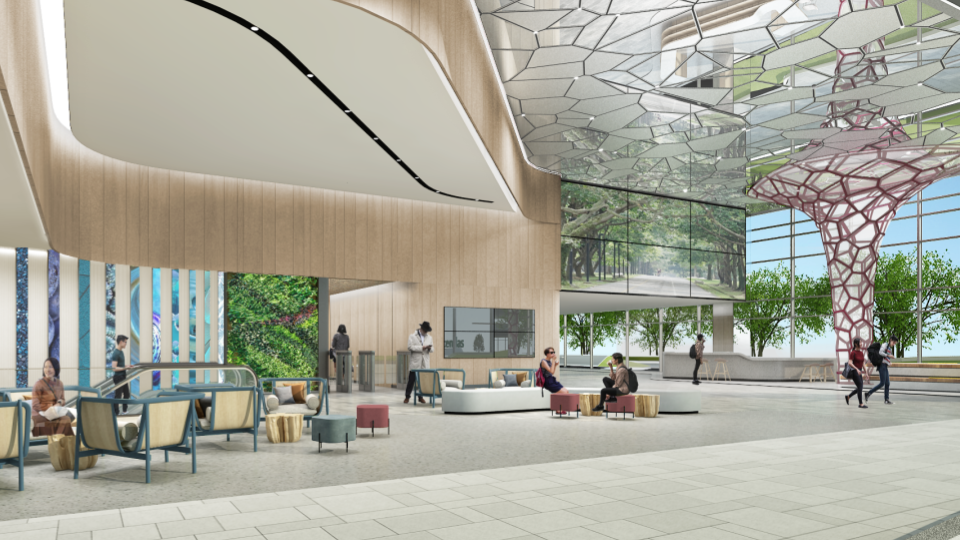Exploring the new post-pandemic workplace hub — A case for Tier 2 and 18-hour cities
When the pandemic hit in 2020 and companies started announcing remote working policies, a lot of young employees working in Indian metro cities decided to move back to their hometowns. Not all of them intended it to be a permanent move — it was simply a sensible way to cope in an unprecedented situation. The move allowed them to save on rent and be close to their families at an uncertain time.
In 2021, many of these employees are still working from their non-metro hometowns. This time, they’re not doing it as a response to a stressful situation, but because they actually want to be there. This rise of Tier 2 cities is nothing but a logical extension of the other pandemic-driven workplace trends we have seen so far — remote working, hybrid workspaces, and a greater focus on sustainability and wellness.
Exploring the global rise of Tier 2 cities
This phenomenon is by no means unique to India alone. Halfway around the world, the concept of the ‘18-Hour City’ has started gaining momentum in the US too. Unlike the ‘never-goes-to-sleep’ 24-hour cities like New York, San Francisco and Chicago, these 18-hour cities offer a comparable standard of living, at a much lower cost.
The popularity of these smaller cities spiked as the pandemic unfolded and remote work became the norm. The big-city glamour of buzzing markets, crowded nightclubs and cramped living spaces lost some of its sheen and employees (especially millennials with young children) saw the advantage of having more space at home to work and study. The pandemic also highlighted the need for a more balanced lifestyle, which was contrary to the always-on hustle culture of big cities. Having the option to work from anywhere meant that people could now move to a Tier 2 city, where they could live in bigger houses and greener neighbourhoods with more parks and open spaces.
However, these employees are not digital nomads — they are digital settlers. Their move to these smaller cities is not intended to be temporary. Real estate trends show that they are thinking long-term, and are buying rather than renting — with housing prices in cities like Austin, Texas reaching $365,0001. What’s more, people are not willing to sacrifice the more social aspects of big cities either. Subsequently, 18-hour cities are far from the ideal of the sleepy suburbs of the previous generations — they each have a thriving ecosystem of bars, restaurants, art, music, and culture.
The impact of this shift on corporate offices
This shift is powered by corporate trends as much as employee preferences. The last few years have seen a subtle but steady shift of power, from Wall Street and the traditional business hubs to Palo Alto and the more tech-oriented verticals. The pandemic months have hastened this process of corporate de-densification all around the world. For instance, Canada has seen a sudden spike in demand for biotech research labs and pharmaceutical facilities2 over the last year — and real estate players and corporate landlords are now more willing than ever before to invest in such facilities.
This is impacting the way traditional corporate offices are valued. Today, the idea of the corner office with the great view no longer has as much pull as it once did — instead, people are showing a preference for robust corporate campuses and more unique spaces. Given that most companies are now looking at hybrid workstyles where employees will need to come to the office just a couple of times each week, there is also a rising demand for offices with a wider range of offerings, where one can spend the entire day.
Should your business consider an office in a Tier 2 City?
This brings us to a more specific consideration — should you opt for an office space in a Tier 2 city? Here are a few factors to keep in mind before you take the decision:
1. Look to your talent for cues
Understanding where your talent is and where they want to be is a great place to begin. Age, lifestyle, family structure and other demographic factors can give you valuable insights into whether an office in a Tier 2 city will be a success. For instance, if your workforce is made up mostly of older, experienced professionals who are well-established in their current city and have family there, a sudden shift to a Tier 2 city may not go down too well. But if you are looking to attract new talent of young professionals, then setting up an office in a less expensive city with great nightlife, culinary offerings, and music and culture may be a fantastic idea.
2. Consider the workplace experiences you will be able to offer
Leasing out a space in a Tier 2 city will drive immense savings in real estate costs — so consider the ways in which you might be able to redirect these savings to offer a better in-office experience.
When we conceptualised the workplace design for a global software solutions company in an 18-hour city in China, we were able to include superior recreational and fitness facilities. Likewise, when an international automobile manufacturer set up an office in Thiruvananthapuram in Kerala, India, we utilised the sprawling space available to create aesthetic and lifestyle-driven offerings — from work cafes and mezzanine meeting spaces to a jaw-dropping installation at the reception area. Such luxurious workplace experiences would have come at a prohibitive cost, had these offices been based in metro cities.

3. Examine your tech and business processes
Your workforce will likely be spread across different cities or countries, with some employees working from home and others operating out of any other regional offices you might have. So it’s important to ensure that you have the right technological backing to enable such distributed operations. Those working from your new office in the Tier 2 city should easily be able to connect and collaborate with colleagues halfway around the world. Moreover, your managers must also be equipped to lead remote teams in a way that ensures cohesiveness in company culture across various geographies. Without the right infrastructure and processes in place, a new office might force entire teams to relocate — a factor that might lead to unnecessary stress and attrition in a post-pandemic scenario.
We ourselves have had the opportunity to examine, experiment with and fine-tune these processes with our Space Matrix global team. As our teams around the world expanded, we focussed on designing a strong tech-driven workplace strategy. We developed tools and remote working processes that not only allowed seamless collaboration among our different teams, but also paved the way for innovations like SpaceXP — our marquee app for a futuristic office experience.
4. Analyse your impact on the city’s infrastructure
Given that a Tier 2 city may not already be saturated with business hubs and tech parks, you might have an early opportunity to shape the city’s real estate infrastructure. This gives you the strategic chance to establish an office space in a location that may well become the Central Business District of that city in the coming years.

Through our presence in China, we enabled numerous real estate entities to shape the infrastructure of Tier 2 cities over the last couple of years. For instance, we collaborated with Ascendas to create The Alpha Park — a one-of-its-kind tech park in Hangzhou that has since become a hub for talent and innovation in the sector.
5. Consider the post-pandemic impact on wellness
The primary factor to keep in mind right now is the impact the pandemic has had on your employees’ physical and mental health. Consider the ways in which you can keep your workforce happy, well-nurtured and productive — and see whether a new workspace in a smaller city can help in catering to any of these needs.
For instance, amidst the stress of the pandemic, people started realising the soothing impact of nature in their daily lives. More people invested time and effort in creating their own green nooks at home and the concept of ‘Urban Jungles’ became extremely popular. With bars and clubs being shut, many young professionals embraced activities like hiking, trekking and climbing on weekends. Being based in a smaller city might afford more opportunities to be closer to nature — think bigger houses with yards, an office space with a garden café and safer team bonding activities like nature walks, barbecues and open air picnics.
Would you consider setting up an office in a Tier 2 or an 18-hour city? We would be happy to discuss the business viability of such a move for your company and help you plan it out, should you decide to go for it.
